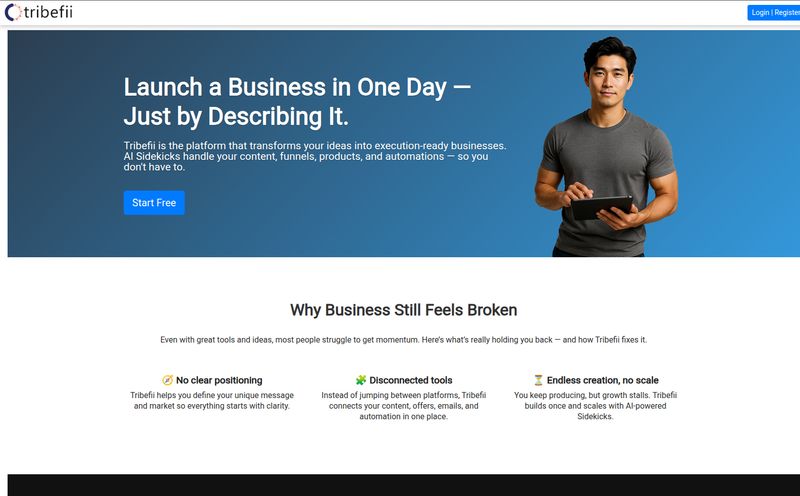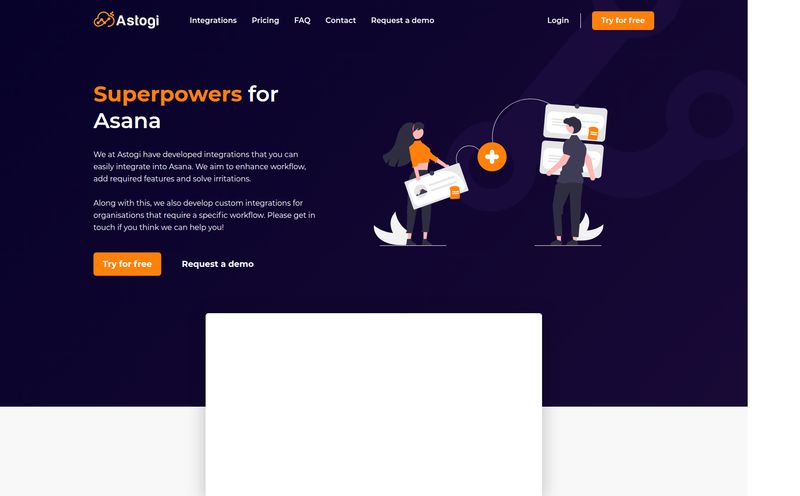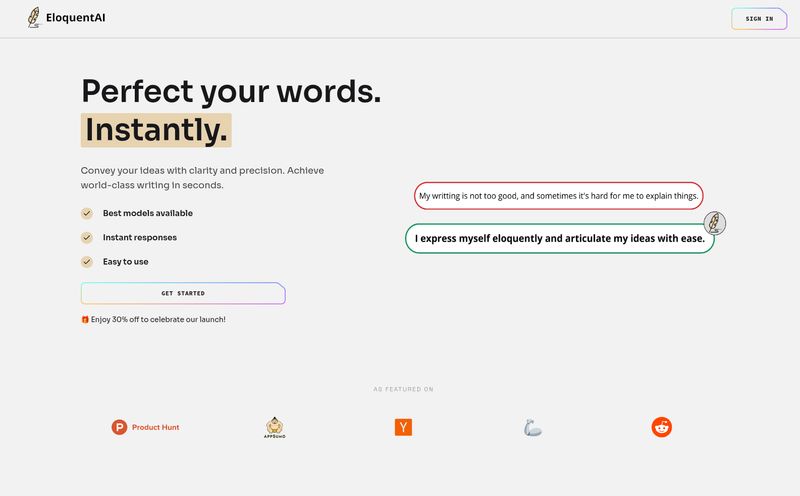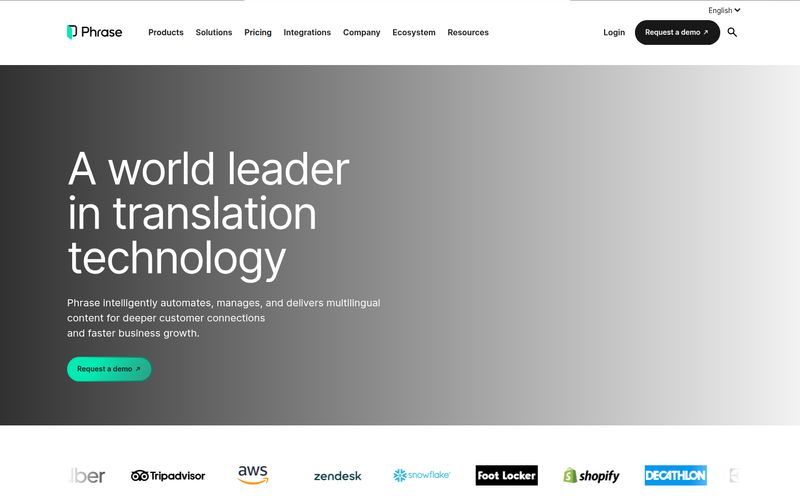If you’ve ever tried to learn a new language, you know the cycle. You’re reading an article in Spanish, you see the word ‘entonces’ for the tenth time. You know you’ve looked it up before. You can almost feel the ghost of the definition in your brain… but it’s gone. Poof. So you open another tab, type it into a translator, see it means ‘so’ or ‘then’, and close the tab. Five minutes later, the cycle repeats.
It’s maddening. It feels like pouring water into a bucket full of holes. For years, my language learning has been a digital mess of bookmarked dictionaries, messy flashcard apps, and a whole lot of repeated effort. I've always felt there had to be a smarter way to integrate learning into the stuff I already do every day—like, you know, endlessly scrolling the internet.
And then I stumbled upon a tool called NeonLingo. The promise? To turn your browser into an active, intelligent language learning notebook. A pretty bold claim. So, as someone who lives and breathes web tools and traffic generation, I had to see if it was just another shiny object or a genuine game-changer.
So, What Exactly is NeonLingo?
At its heart, NeonLingo is a browser extension, currently for Chrome. But calling it just a “translation plugin” is like calling a smartphone just a “phone.” It doesn’t capture the whole picture. Its main gig is to act like a smart highlighter for your brain.
Here’s the core loop: you’re on a webpage in your target language, you find a word you don’t know, you click it. NeonLingo gives you the translation. But here's the magic: from that moment on, every time that same word appears on any webpage you visit, it’s automatically highlighted. It’s like leaving little digital breadcrumbs for your future self. If you forget the meaning, a simple hover of the mouse brings the definition right back. No new tabs, no context switching. Just a gentle, persistent reminder.
How NeonLingo Turns Your Browser into a Learning Hub
It sounds simple, but the effect on memory retention is surprisingly powerful. It’s built on the principles of active recall and spaced repetition without you even having to think about it.
The Magic of Automatic Highlighting
This is the feature that got me to install it in the first place. We've all used highlighters on textbooks. But what if that highlighter knew what you were about to forget? That's what this feels like. By constantly and passively exposing you to words you’ve recently learned, it drills them into your long-term memory. You stop just recognizing the word and start actually knowing it. It’s a subtle but profound shift from passive reading to active reinforcement.
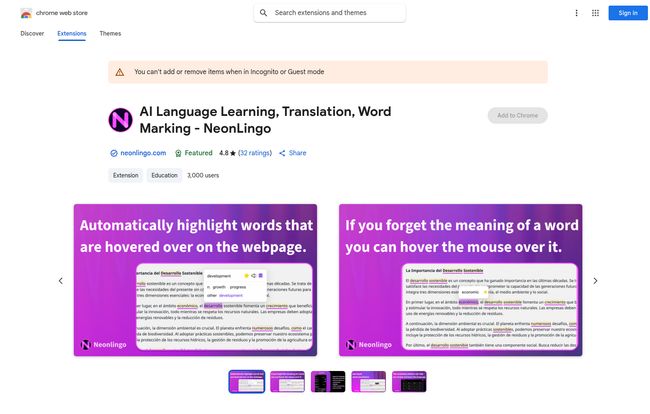
Visit NeonLingo
AI That Understands Context (Mostly)
Another neat trick up its sleeve is the use of AI for definitions. Instead of just a one-to-one translation (which, as we know, can be hilariously wrong), NeonLingo tries to give you the meaning of the word in that specific context. Now, let's be honest, AI isn't perfec, but what is? I’ve seen it occasionally miss the nuance of an idiom, but it’s a massive improvement over standard machine translation. For VIP members, they even pull in the power of DeepL’s engine, which is widely considered the gold standard in the translation space. For a language nerd, that’s a big deal.
Your Personal Digital Wordbook
Every word you look up gets saved to a personal vocabulary list, or “wordbook.” This isn’t just a boring list of words. It’s your own curated collection of terms you’re actively learning. You can review it, manage it, and see your progress over time. It also powers another key feature: the flashcards. For anyone who has ever spent hours manually creating Anki decks, having this happen automatically is a massive relief.
The Nitty-Gritty: From PDFs to Brain-Hacking Flashcards
Beyond the core highlighting, NeonLingo has a few more features that cater to serious learners. It offers PDF translation and highlighting, which is a fantastic bonus for students or professionals who deal with academic papers or reports in other languages.
But the real killer feature for the paid tiers is the flashcard system. It’s not just any old flashcard system; it’s built using the FSRS algorithm. If you're not familiar, FSRS stands for Free Spaced Repetition Scheduler. It's a highly sophisticated algorithm that predicts when you're most likely to forget a word and shows you the flashcard right at that critical moment. This is scientifically proven to be one of the most efficient ways to memorize information. Having this integrated directly with the words you’re already discovering organically through browsing? That's just smart design.
The Big Question: What's the Price Tag?
Alright, this is where the rubber meets the road for most people. Is it another expensive subscription? Well, yes and no. There’s a free version, and it’s surprisingly generous.
The Free Plan: A Great Starting Point
The free version gives you the core experience. You get the automatic highlighting, Microsoft-powered translations, and you can save up to 200 words in your vocabulary list. You also get 200 AI interpretations per month. In my opinion, this is more than enough to see if the NeonLingo method clicks with you. It’s a no-risk way to try it out for a few weeks.
The Paid Plans: For the Serious Polyglot
If you get hooked, the paid plans are where things get really interesting. Here's a quick breakdown:
| Plan | Price | Key Features |
|---|---|---|
| Free | $0/month | 200 word vocab list, 200 interpretations/month, basic flashcards. |
| Pre | $5/month | DeepL & AI Engine, 500 word vocab list, 1000 interpretations, FSRS Flashcards, cloud sync, custom colors. |
| Pre+ | $10/month | Everything in Pre, plus unlimited vocabulary, unlimited interpretations, and priority support. |
That $5/month 'Pre' plan is the sweet spot, in my view. Getting access to the superior DeepL translations and the FSRS flashcards is easily worth the cost of a fancy coffee if you're serious about your studies.
My Honest Take: The Good, The Bad, and The AI
No tool is perfect. While I’m genuinely impressed with NeonLingo, it's important to be balanced. The core concept is its biggest strength. It integrates so naturally into my existing workflow that I barely notice it's there—until I realize I haven't had to look up the word ‘desarrollo’ in weeks.
On the flip side, having your vocabulary growth tied to a browser extension can feel a bit limiting if you do a lot of reading on your phone or tablet. The cloud sync for flashcards on the paid plan helps mitigate this, but the core discovery process happens on a desktop. Also, the free plan's 200-word limit, while a fair trial, can be hit pretty quickly if you're an avid reader.
How Does NeonLingo Stack Up?
The language-learning extension space has some competition, with tools like Remembeary or even DeepL's own translator. Many of them are great. But where NeonLingo carves out its niche is in the automation of it all. Many other tools require you to actively click, save, and then go to a separate interface to study. NeonLingo’s genius is in the passive, ever-present highlighting. It closes the loop between discovering a word and reviewing it in a way that feels effortless.
Frequently Asked Questions
- What languages does NeonLingo support?
- The extension is listed as multilingual, supporting a wide array of languages. For the most up-to-date list, it's always best to check their page on the Chrome Web Store.
- Is NeonLingo safe? Does it collect my data?
- According to their privacy disclosure on the store page, the developer declares that your data is not being sold to third parties and is not used for purposes unrelated to the item's core functionality. That's a good sign.
- Do I need the paid version to learn effectively?
- I'd say the free version is fantastic for casual learners or for getting started. But if you're a dedicated student, the upgrade for the FSRS flashcards and the DeepL engine is where the real power is.
- How does the FSRS flashcard system work?
- In short, it's a smart algorithm that tracks your memory. It shows you flashcards at the scientifically calculated best moment to strengthen your memory, right before you forget the word. It's far more efficient than random reviews.
- Can I use NeonLingo on my phone?
- The main browser extension is for desktop browsers like Chrome. However, the paid plans include cloud synchronization and device-agnostic flashcards, meaning you can review your vocabulary on your phone, even if the word discovery happens on your computer.
- Does it work on any website?
- Yes, it's designed to work across the web on any site you browse. Plus, the added ability to upload and translate PDFs makes it even more versatile.
Is NeonLingo Worth the Install?
After a few weeks of using it, my leaky bucket of a brain feels... a little more solid. Seeing those highlighted words scattered across articles and forums has genuinely helped words stick without the tedious effort of manual flashcards. It’s for the modern language learner: the one who learns by reading blogs, news, and Reddit threads in their target language.
If you've ever felt that frustrating cycle of look-up, forget, repeat, then you owe it to yourself to give NeonLingo a try. The free version is a no-brainer. It might just be the tool that finally makes those new words stick.
Reference and Sources
- NeonLingo Official Website
- NeonLingo on the Chrome Web Store
- NeonLingo Pricing Page
- An Overview of the FSRS Algorithm
